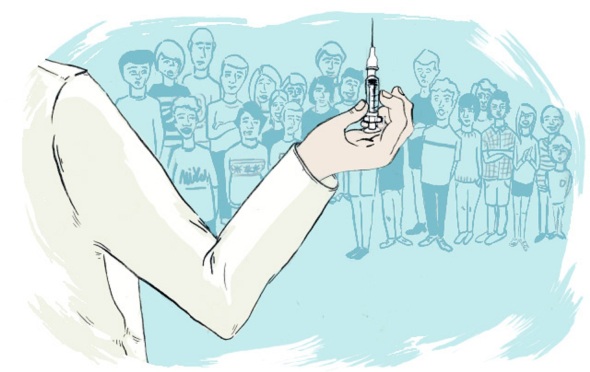HIV vaccines may make things worse
Despite what conspiracy theorists say, there is no cure for HIV. Not that people aren’t feverously working hard to find one, it is just really hard to do. To illustrate that point researchers have found that vaccines designed to protect against HIV can backfire and lead to increased rates of infection. This unfortunate effect has been seen in more than one vaccine clinical trial.
Scientists have newly published results that support a straightforward explanation for the backfire effect: vaccination may increase the number of immune cells that serve as viral targets. In a nonhuman primate model of HIV transmission, higher levels of viral target cells in gateway mucosal tissues were associated with an increased risk of infection.
The findings suggest that vaccine researchers, when evaluating potential HIV/AIDS vaccines, may need to steer away from those that activate too many viral target cells in mucosal tissues.
“One of the reasons why it has been so difficult to make an AIDS vaccine is that the virus infects the very cells of the immune system that any vaccine is supposed to induce,” says senior author Guido Silvestri.
A large part of the HIV/AIDS vaccine effort has been focused on developing vaccines that stimulate antiviral T cells. T cells come in two main categories, defined by the molecules found on their surfaces. CD8 is a marker for “killer” cells, while CD4 is a marker for “helper” cells. CD4+ T cells are known to be primary targets for HIV and SIV (simian immunodeficiency virus) infection, while several studies have proposed that CD8+ T cells could be valuable in controlling infection.
In this study, researchers immunized rhesus macaques with five different combinations of vaccines encoding SIV proteins found on the inside of the virus only. This experimental strategy was designed to examine the effects of cell-mediated immunity, without stimulating the production of neutralizing antibodies, in what scientists refer to as a “reductionist approach”.
The monkeys received an initial immunization followed by two booster shots after 16 and 32 weeks. The monkeys were then exposed to repeated low-dose intrarectal challenge with SIV, once per week, up to 15 times. In general, the immunization regimens did not prevent SIV infection. While all the immunized monkeys had detectable levels of circulating “killer” CD8+ T cells, there was no correlation between these cells and preventing infection.
The most important result, however, was that the monkeys that became infected had higher levels of activated CD4+T cells in rectal biopsies before challenge.
“This study shows that if a vaccine induces high levels of activated CD4+ T cells in mucosal tissues, any potential protective effect of the vaccine may be hampered,” Silvestri explains.
The study emphasizes the unique challenges that HIV poses in terms of vaccine development, and the importance of pursuing vaccine concepts and products that elicit strong antiviral immune responses without increasing the number of CD4+ T cells in the portals of entry for the virus.
I know there are people who think that it is cheaper to find a treatment and not a cure, but groups are working hard to find a cure for HIV. One day we will have one and I understand that with all our technology and science it’s hard to believe that we don’t have one, but look around, we are just over zealous monkeys banging around blindly through this life.
We’ve barely scratched the surface of what our universe has to offer and even that is sometimes too much for us as humans to understand. However, we will get there, it will just take time. So if you have HIV/AIDs, just try to hold on, sooner or later we will find a cure and thankfully it is hardly a death sentence these days.
Sources:
Carnathan DG, Wetzel KS, Yu J, Lee ST, Johnson BA, Paiardini M, Yan J, Morrow MP, Sardesai NY, Weiner DB, Ertl HC, & Silvestri G (2014). Activated CD4+CCR5+ T cells in the rectum predict increased SIV acquisition in SIVGag/Tat-vaccinated rhesus macaques. Proceedings of the National Academy of Sciences of the United States of America PMID: 25550504




But enough about us, what about you?